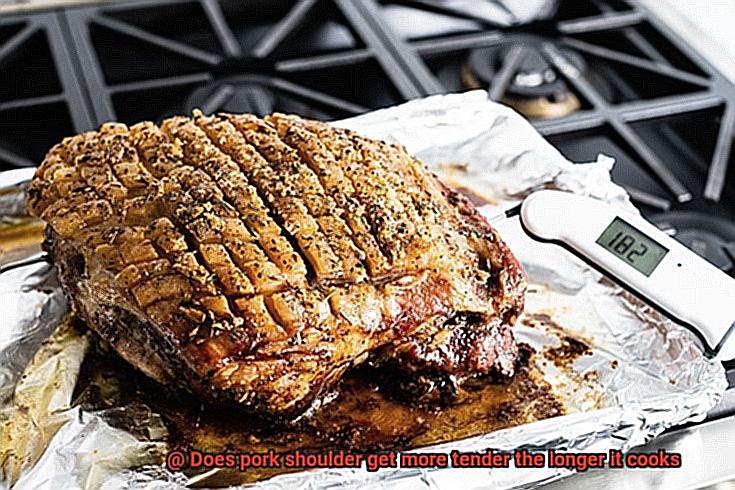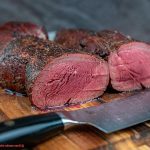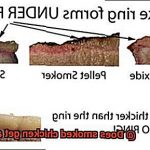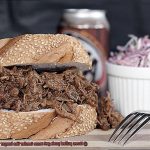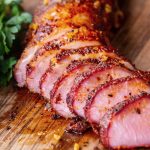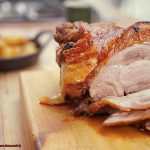Are you dreaming of a mouthwatering and juicy pork shoulder for dinner tonight? Are you curious if your pork shoulder will become more tender with additional cooking time? Well, the answer is here. It’s an age-old question: does pork shoulder get more tender the longer it cooks?
The answer is both simple and complex. Pork shoulder, also known as pork butt, is a tough and fatty cut of meat that needs an extended cooking time to dissolve the connective tissue and melt the fat. But how long should you cook it, and can you overdo it? In this blog post, we’ll explore the science behind cooking pork shoulder, from the ideal temperature and cooking time to different methods of preparation.
We’ll take a deep dive into the various factors that can impact your pork shoulder’s tenderness, including meat quality, cooking techniques, and roast size. We’ll also highlight some common pitfalls to avoid when preparing your pork shoulder, such as adding too much liquid or not allowing enough resting time.
By the end of this post, you’ll have all the knowledge you need to cook perfect pork shoulder every time – whether roasting, braising or slow-cooking your meat. So let’s roll up our sleeves and discover how to make this delicious cut of meat shine at your next meal. Whether you’re an experienced chef or just starting out in the kitchen, get ready to elevate your culinary skills with succulent pork shoulder.
Contents
Why Does Pork Shoulder Get More Tender the Longer it Cooks?
Pork shoulder is a cut of meat that is beloved by many for its rich flavor and tender texture. But have you ever wondered why this cut of meat becomes more tender the longer it cooks? The answer lies in the connective tissue and fat content present in pork shoulder, which both contribute to its delectable taste and texture.
Firstly, pork shoulder contains connective tissue, or collagen, which holds the muscle fibers together. When collagen is heated, it breaks down into gelatin. This process lubricates and tenderizes the meat, resulting in a melt-in-your-mouth texture. However, this process takes time, so pork shoulder needs to be cooked low and slow for several hours to achieve optimal tenderness.
In addition to collagen breakdown, the fat content in pork shoulder also contributes to its tenderness and flavor. As the meat cooks, the fat melts and infuses the meat with moisture and juiciness. Many slow-cooking recipes call for leaving the fat on the meat until after it has been cooked to maximize this effect.
It’s important to note that cooking pork shoulder for too long can have negative effects on its texture. Overcooked pork can become dry and tough, so it’s essential to monitor the cooking temperature and time carefully to ensure that you don’t overdo it.
To achieve mouthwateringly tender pork shoulder, follow these tips: cook low and slow for several hours to allow for collagen breakdown and fat melting, and pay attention to cooking time and temperature to avoid overcooking. With patience and care, you’ll end up with a flavorful and tender dish that will make your taste buds sing.
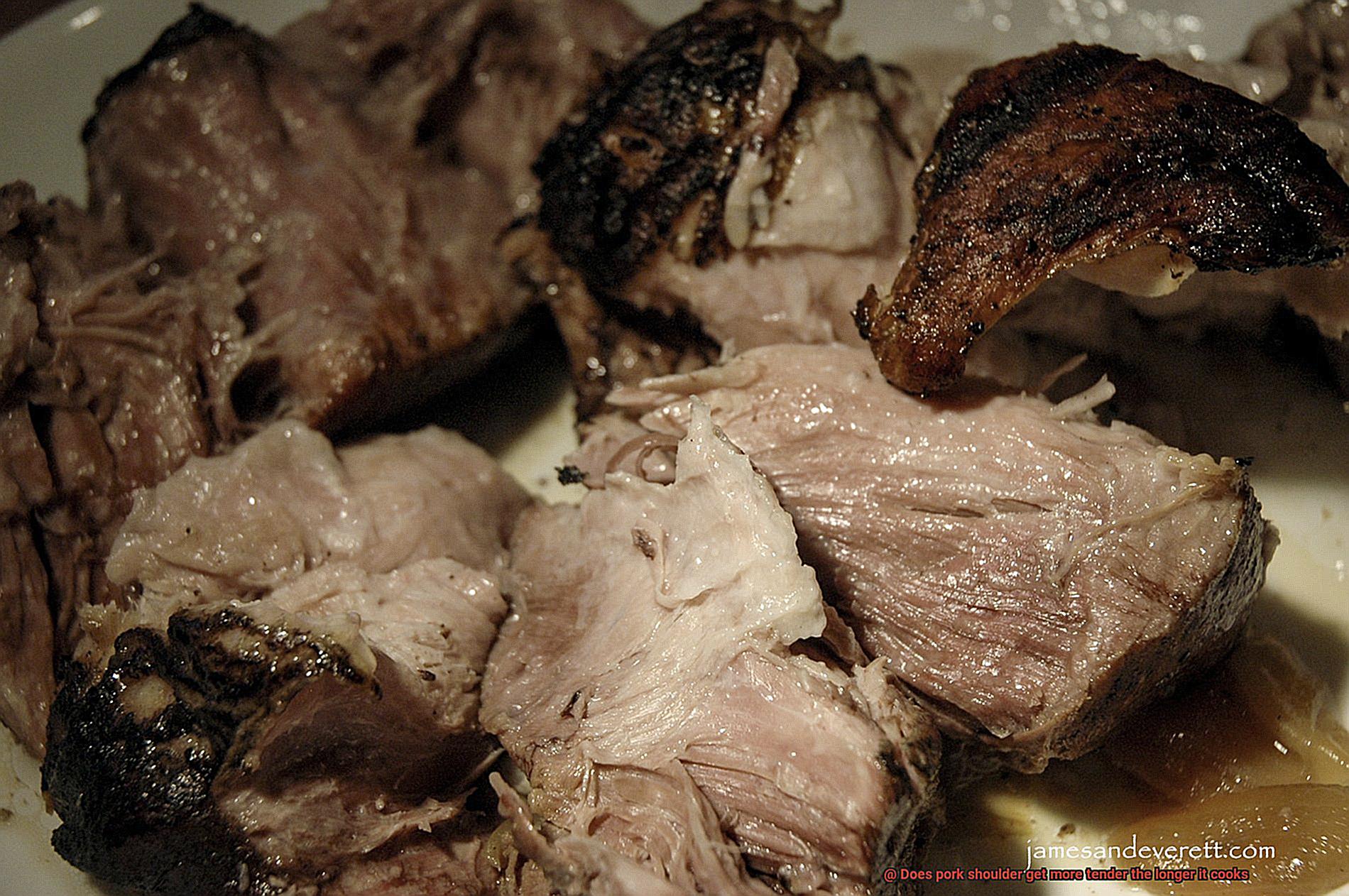
What Are the Benefits of Cooking Pork Shoulder Low and Slow?
This technique involves cooking the meat at a low temperature for an extended period of time, resulting in a tender and flavorful final product. But why is this method so popular among chefs and home cooks alike? Here are the benefits of cooking pork shoulder low and slow:
Firstly, this method allows the connective tissues in the meat to break down, resulting in a juicy and delicious final product. As the collagen in the meat dissolves into gelatin, it not only makes the meat more tender but also adds richness to any sauce or gravy made from the drippings.
Secondly, cooking pork shoulder low and slow allows for the fat in the meat to render slowly. This ensures that the meat stays moist and succulent throughout the cooking process. Say goodbye to dry and tough pork.
Thirdly, slow-cooking provides ample time for flavors to develop in the meat. Whether using herbs, spices, or marinades, your pork shoulder will absorb those flavors until each bite bursts with deliciousness.
But perhaps one of the most significant benefits of this method is how hands-off it is. Once your pork shoulder is in the oven or on the grill, all you need to do is wait until it’s ready to be taken out. This makes it a great option for busy schedules or those who want to prepare their meal ahead of time.
What Temperature and Time Are Best for Cooking Pork Shoulder?
Let’s start with temperature. The sweet spot for cooking pork shoulder is between 225-250°F. This low temperature allows for a slow and steady cook, breaking down the dense connective tissues that make the meat tough. It also helps retain moisture, preventing it from drying out in the process.
Now, let’s talk about time. Generally, you’ll want to cook your pork shoulder for 1-1.5 hours per pound of meat. That means if you have a 5-pound pork shoulder, you’re looking at approximately 5-7.5 hours of cook time. However, keep in mind that factors such as thickness can affect cooking times, so it’s always best to use a meat thermometer to gauge when your pork shoulder is ready.
Speaking of meat thermometers, they are an essential tool in achieving optimal tenderness. The internal temperature of your pork shoulder should reach 195-205°F for maximum tenderness.
But why stop at tenderness when you can enhance the flavor too? A simple rub or marinade can take your pork shoulder from good to great. I recommend using a rub made up of salt, pepper, garlic powder, and paprika to add a burst of flavor to your dish.
How to Tell When Pork Shoulder Is Done Cooking?
Pork shoulder is a cut of meat that requires careful monitoring to ensure that it’s cooked to perfection. Whether you’re a beginner cook or a seasoned chef, it’s important to know how to tell when pork shoulder is done cooking. Here are five tips to help you achieve delicious and juicy pork shoulder every time:
Use a Meat Thermometer
One of the easiest and most accurate ways to tell when pork shoulder is done cooking is by using a meat thermometer. The internal temperature of the pork should reach 190-200°F (88-93°C) for it to be fully cooked and tender. This method allows for precise temperature control, which is especially important when it comes to pork. Be sure to insert the thermometer into the thickest part of the meat without touching any bones or the pan.
Check for Tenderness
Another way to tell if pork shoulder is done cooking is by using a fork or tongs to gently pull the meat apart. If it easily shreds into pieces, then it’s done cooking. If it’s still tough and doesn’t easily shred, then it needs more time in the oven. This method allows you to check the texture of the meat and ensure that it’s not overcooked or undercooked.
Low and Slow Cooking Method
If you want your pork shoulder to be even more tender, you may want to try the low and slow cooking method. This involves cooking the pork shoulder at a temperature between 200-250°F for several hours until it reaches an internal temperature of around 195°F. This method allows for slow breakdown of tough connective tissue, resulting in melt-in-your-mouth tender pork.
Check the Color and Texture
When fully cooked, pork shoulder should be moist and tender with a slight pink hue. If the meat is dry or tough, it may need to be cooked for a longer period of time. Additionally, the texture of the meat should be consistent throughout and not have any pockets of dryness or toughness. Checking both the color and texture of the meat can give you a good indication of whether it’s done cooking.
Don’t Overcook
It’s important not to overcook your pork shoulder, as this can make it dry and tough. Be sure to monitor the temperature and cooking time carefully to ensure that you don’t overdo it. Additionally, letting the pork rest for about 10-15 minutes before cutting into it allows the juices to redistribute and make the meat more tender and flavorful.
Tips for Preparing and Cooking Perfectly Tender Pork Shoulder
If you’re looking to impress your guests with a perfectly tender pork shoulder, there are a few key steps you need to follow. Let’s dive into the details and explore how you can prepare and cook a mouthwatering dish that will leave everyone wanting more.
Choose the Perfect Cut
The first step in preparing tender pork shoulder is selecting the right cut of meat. Look for pork shoulder with plenty of marbling and connective tissue, as this will help keep the meat moist and tender during cooking. When shopping, don’t be afraid to ask your butcher for advice on which cut to choose.
Properly Prepare the Meat
Before cooking, it’s important to properly prepare the pork shoulder. This may involve trimming any excess fat or removing the skin, depending on your recipe. Many recipes also call for seasoning the meat with salt and other spices, which can help enhance its flavor and tenderness. Don’t skimp on this step – it can make all the difference in your end result.
Cook Low and Slow
One of the most important factors in achieving tender pork shoulder is cooking it low and slow. This means cooking the meat at a low temperature for a long period of time, which allows the connective tissue to break down and the meat to become tender. You can use a slow cooker or oven for several hours until it reaches an internal temperature of at least 190°F. Be patient – it’s worth it.
Consider Smoking It
Another option is to smoke the pork shoulder, which can add a rich smoky flavor while also keeping it moist and tender. This method takes longer than other cooking methods, but the end result is well worth the wait. If you have a smoker available, give it a try.
Let It Rest
Once your pork shoulder is fully cooked, let it rest for 10-15 minutes before slicing or shredding. This allows the juices to redistribute throughout the meat, resulting in a more flavorful and tender end product. Don’t skip this step, as it can make a big difference in the texture and taste of your pork shoulder.
Common Mistakes to Avoid When Cooking Pork Shoulder
I am here to help you avoid the common mistakes that can ruin your dish.
Firstly, don’t forget to trim off any excess fat from the pork shoulder. While some fat is necessary for flavor and moisture, too much can lead to greasiness and chewiness. Trim it down to the right amount, and you’re on your way to a perfect dish.
Secondly, cooking at too high of a temperature is a recipe for disaster. This leads to an overcooked exterior while the interior remains undercooked and tough. To avoid this, cook your pork shoulder low and slow. This method allows the meat to cook evenly and become tender throughout.
Thirdly, don’t rush the process. Allowing your pork shoulder to rest before slicing is crucial. This step gives the juices time to redistribute throughout the meat, resulting in a more flavorful and tender final product. Aim for at least 10-15 minutes of resting time.
Lastly, using the wrong cooking method can lead to tough and dry pork shoulder. While grilling can be a great option, using indirect heat and monitoring the temperature closely is important to avoid overcooking or drying out the meat. Other methods like braising or slow-cooking can also work wonders.
What Kind of Dishes Can You Make with Tender Pork Shoulder?
Look no further than the tender and flavorful pork shoulder. When cooked to perfection, this cut of meat can be used in a variety of dishes that are sure to impress.
For a classic crowd-pleaser, try pulled pork sandwiches. Slow-cook the pork until it’s fall-apart tender, then shred and serve on a bun with some tangy barbecue sauce and crunchy coleslaw. It’s the perfect dish for summer barbecues or game day gatherings.
If you’re in the mood for something with a little more kick, give carnitas a try. Slow-cook the pork until it’s fork-tender, then shred and crisp it up in a pan. Serve with warm tortillas, fresh salsa, and creamy guacamole for a Mexican-inspired meal that’s sure to satisfy.
Looking for an easy weeknight dinner? Pork tacos are the answer. Slow-cook the meat with spices until it’s bursting with flavor, then serve on a warm tortilla with your favorite toppings like zesty cilantro, tangy onion, and bright lime juice.
For those chilly nights when you need something hearty and comforting, whip up a pork stew. Slow-cook the deliciously tender pork shoulder with vegetables like carrots, potatoes, and onions in a rich and flavorful broth. Serve with crusty bread or rice for a cozy meal that will warm you from the inside out.
4-G7L0zIkjs” >
Conclusion
In the world of meat cuts, pork shoulder is a true gem that can be transformed into a succulent and flavorful dish when treated with care. But how to achieve that melt-in-your-mouth texture that we all crave? The secret lies in low and slow cooking, which allows the tough connective tissue to break down and the fat to render slowly, resulting in juicy and tender meat.
To start, choose a cut with plenty of marbling and connective tissue for maximum flavor potential. Trim excess fat and season with spices to elevate the taste profile. Then, cook using a slow-cooker or oven at a low temperature for several hours until the internal temperature reaches at least 190°F. Don’t rush the process – patience is key when it comes to pork shoulder.
Avoid common mistakes such as cooking at too high of a temperature or not trimming excess fat. These errors can lead to dry and tough meat that no amount of sauce can salvage. Instead, take your time and let the magic happen.
Once cooked to perfection, let the pork shoulder rest before slicing or shredding to allow juices to redistribute throughout the meat. From there, the possibilities are endless – pulled pork sandwiches, carnitas, pork tacos, stews – you name it.
So whether you’re an experienced cook or just starting out in the kitchen, don’t be intimidated by this versatile cut of meat. With some TLC and attention to detail, you can create mouthwatering dishes that will have your guests begging for seconds (and thirds).

